


A down jacket, down coat or down jacket differs from other outerwear in its filling - natural down and feather or synthetic fibers. It looks like a jacket, can be of different lengths - from very short to long.
For protection from cold, wind and precipitation in late fall and winter.
Down jackets were invented in the 20th century primarily for mountain climbers and their protection from low temperatures. The name of the person who invented the down jacket is unknown - this invention is attributed either to traveler Eddie Bauer or to the company Snorkel Parka. Down products came into fashion in 1964 - then they became available to consumers.
High-quality down jackets pose no danger to humans. Chinese fakes of famous brands, which are often impregnated with formaldehyde - a strong mucosal irritant and allergen - can cause harm.

Depending on the filler, the technology used, the outer and inner material, down jacket can withstand up to -50 ° C.
Wrong temperature mode - each down jacket is designed for its own temperature, or low quality jacket - loose padding, thin nylon, "cold" filler.
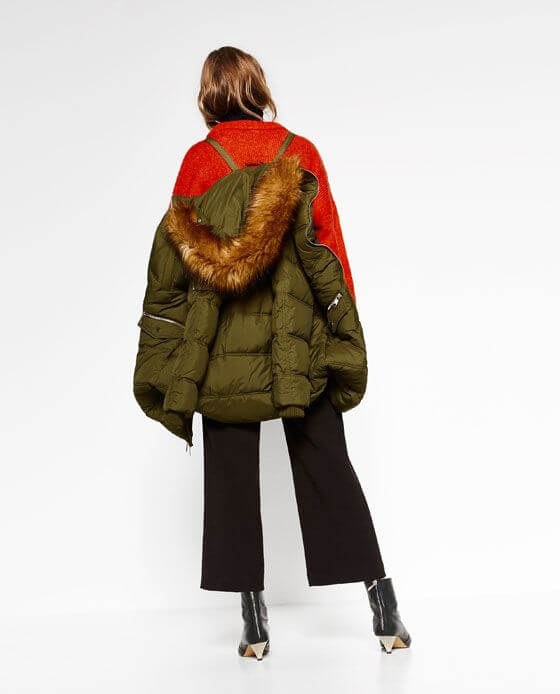
The straps inside the down jacket are made for convenience - you can take the jacket off indoors and wear it like a backpack and not take your hands.
Such a statement is not true - it all depends on what kind of down jacket and what kind of fur coat. Quality down jacket or coat can withstand up to -50 ° C and keep warm well, while the coat is unlikely to keep warm at temperatures below -20 ° C - the exception would be beaver fur coats.
Sweating can be caused by temperature changes - when you go indoors from the street, as well as a down jacket that is too warm to match the temperature outside. Another reason is the synthetic lining, which does not allow air to circulate freely.
Depends on the filler and its density, fabric, length. On average, down jackets weigh from 400 to 1500 grams.
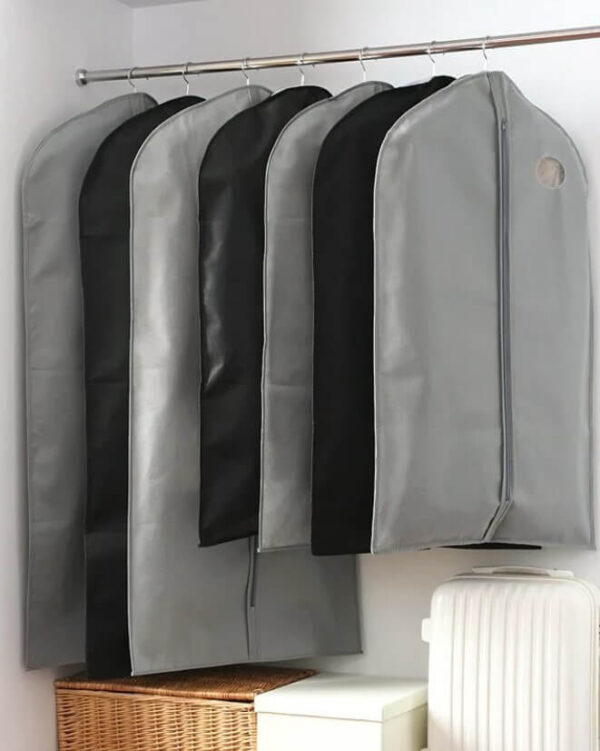
After the winter season is over, the down jacket should be washed, dried, turned out, hung on the shoulders and packed in a fabric cover for clothes. Store vertically in the closet without pressing other heavy clothing - sheepskin coats, fur coats.
Use a vertical steamer to steam your down jacket. If the product label does not indicate that ironing is prohibited, you can steam steam the down without touching the fabric.
Down jackets, as a rule, do not iron with a simple iron - there is a risk of burning the thin fabric. It is better to use a steamer or go to a dry cleaner.
Yellowing of the surface of the down jacket can be due to improper washing - this often happens after using laundry soap, as well as with prolonged exposure to direct sunlight or with dirt.
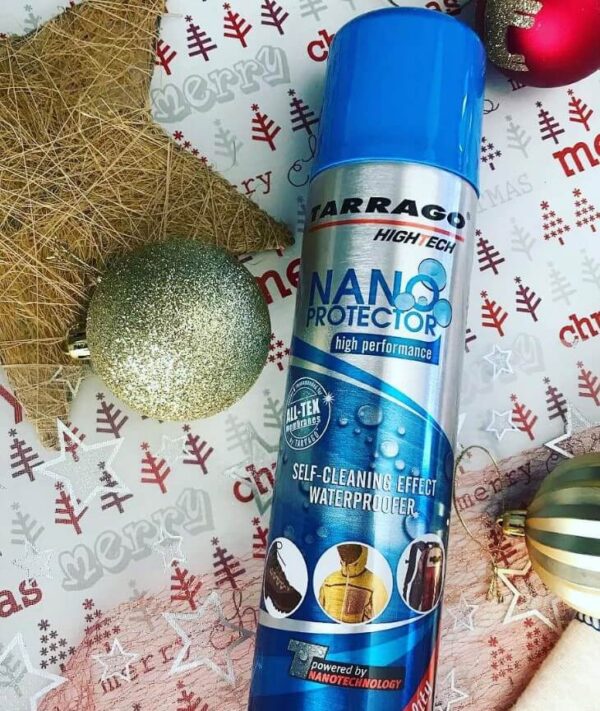
Special moisture-repellent impregnations are available for down jackets. The companies Collonil, Tarrago, Trekko and others offer moisture repellents.
The cause of down coming out of a down jacket can be poor quality inner or outer material, as well as holes in the lining or outer material. The down may start to come loose over time - this is due to deterioration in the strength of the fabric from sun exposure, improper care, damage, and frequent washings.
A vacuum bag can be used to reduce the volume of the down, but this method can compromise the integrity of the down and cause it to stick to the down. This can be used to pack the jacket for short periods of time - for example, in a suitcase for a trip.
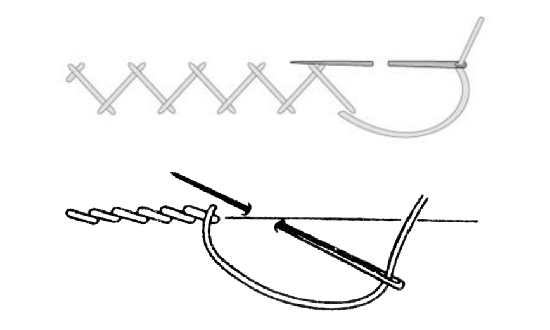
Use a thin needle and thread that matches the color of the down as closely as possible. It is best to sew with a goatskin stitch or a stem stitch. If the tear is big, you may need a patch.
The down's filling is easy to straighten by hand. You can also use a vacuum cleaner without a nozzle on low power - drive it on the inside of the down jacket after washing. To keep the down from bunching up, use shade or special balls for washing.
Dry-cleaning will help to renew your down jacket - there it will be gently washed and dried. Some professional cleaners also provide services for dyeing jackets - relevant for products that have washed or faded color.
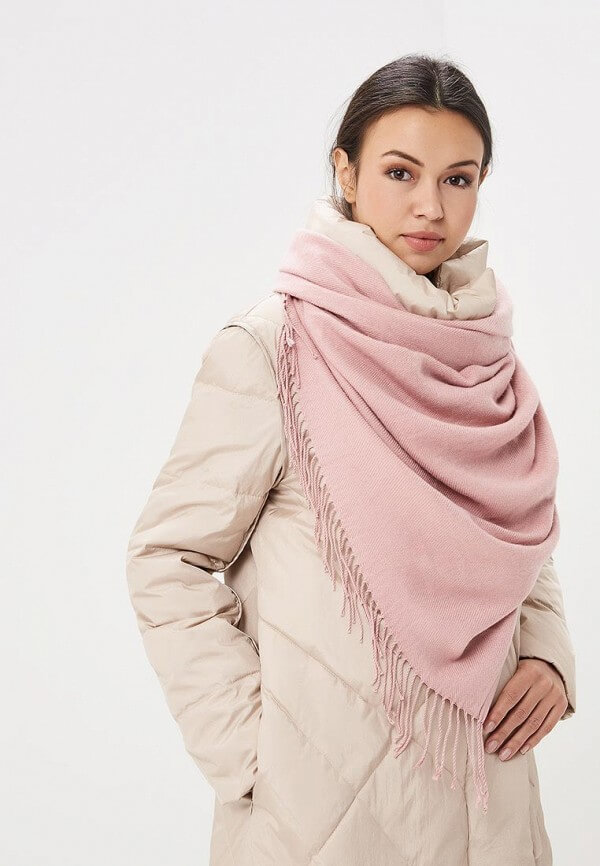
Play around with down jacket will help a beautiful belt, appliques, brooches, scarves and shawls, patches.
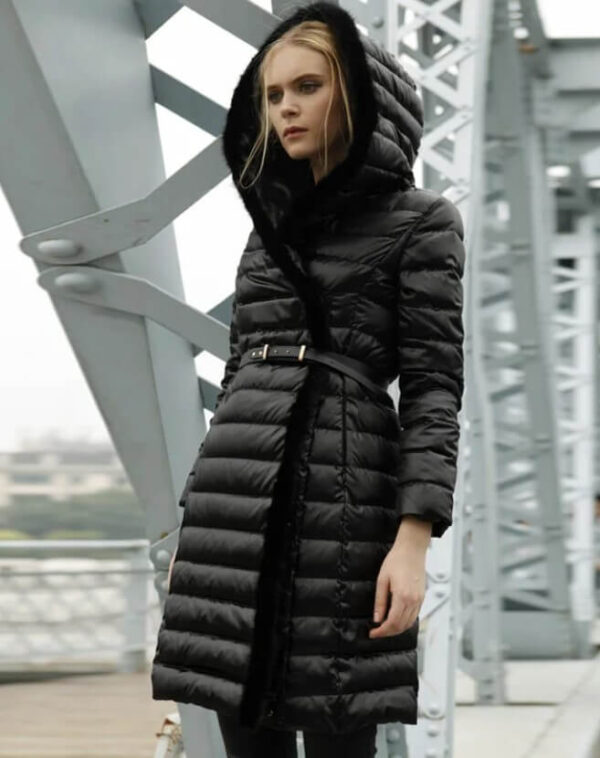
The filler is a natural down and feather - often goose down, camel hair, or synthetic materials of polyester - sintepon, hollofiber, isosoft, thermofin, shelter and others. Which filling is better.
Some down jackets allow the use of oxygen stain removers, but you need to make sure that the label of the down jacket provides for such a possibility. If stain removers are prohibited, have the jacket professionally cleaned.
The cut and silhouette, the material of the outer side, the type and quantity of the filler, the quality of the seam, the temperature mode.
The down jacket filler is good at absorbing odors - tobacco smoke, food, emissions, gasoline. If it is not ventilated, odors become more pronounced over time.
Repair down jackets are engaged in some ateliers, as well as special workshops for repairing outerwear. There are such organizations in every city.
For dyeing, special fabric dyes are used, as well as acrylic paints. In order not to damage the product and to be sure of the result, you can take the down jacket for dyeing to a dry cleaner - many dry cleaners provide such services.
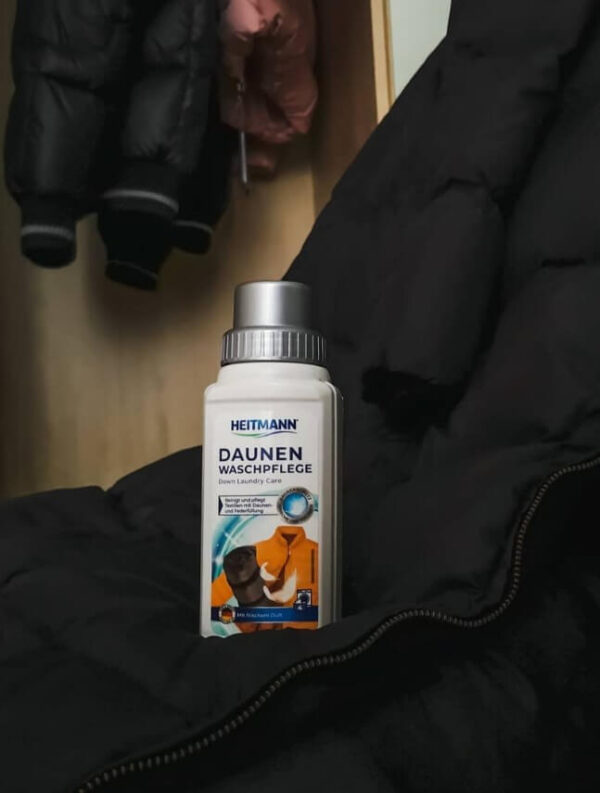
Powder for washing down jackets is better not to use - a great risk of leaving streaks on the surface, and in the case of membrane jackets, even clogged material. For washing it is better to use special gels for down jackets. How to wash a down jacket correctly.
You can hand wash your down jacket vertically, hanging it over the tub, or with a soak in a tub or basin. The first option is good for lightly freshening the jacket, the second is good for heavy soiling.
Set the temperature to no more than 30 ° C, set the "Delicate mode". Check the pockets, unzip the fur, and load the jacket into the drum of the washing machine. Add detergent to the special compartment to wash the down jacket. Start the wash.
Fill the tub with enough water - about a third of its height. Add your down cleaner and stir the water well. Dip the down jacket in and "sink" it to let the moisture build up inside. Leave it for 30-40 minutes, then you can wash it.

White down jacket should be washed with mild liquid detergents designed for down jackets.
Ban on washing some models in a washing machine due to possible damage to the integrity of the fabric, as well as knocking down the filling and deterioration of its properties.
Run the extra rinse mode on the washing machine, or rinse the jacket by hand under the tap or shower.
Gently, without twisting or squeezing. After washing, you can hang the down jacket on the shoulders over the tub and let excess moisture drain off, then hang it in a drier place for final drying.
Problems with spinning occur when the down jacket is unevenly distributed on the drum. Run the spin mode again, but first carefully spread the down jacket so that it does not lie lumpy.
Dry the down jacket vertically, away from heaters at room temperature.
Dilution is the result of a bad rinse. Run another rinse cycle on the washing machine or thoroughly rinse the down under running water.
Only a washed down jacket can smell due to drying next to heaters.
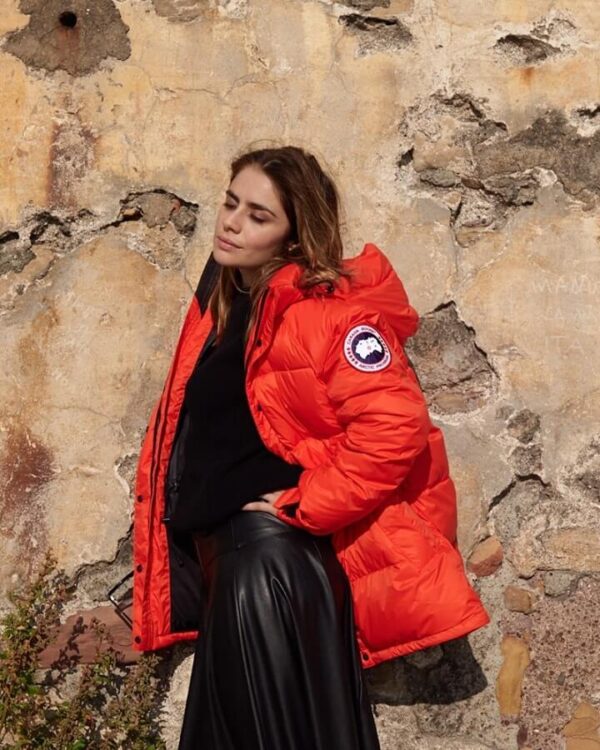
Use a soap solution diluted with water. Apply it to the collar and leave it on for 10 minutes, then go over the spot with a soft sponge. Do not use aggressive folk remedies such as petrol, ammonia or glass cleaner to avoid damaging the jacket's fabric.
This protects the outer fabric from tears and also reduces the likelihood of tears. However, practice shows that turning the jacket inside out cannot guarantee the complete safety of the product during washing. It is necessary to follow the instructions on the label of the down jacket carefully.
They help keep the filler from bunching up as the washing drum rotates. They may not be used with all types of down jackets.

The lightest down jackets are those made with Ultra Light technology - from the feathers of migratory, not domestic geese, the thinnest nylon, but with a dense padding.
A warm down jacket should be at least mid-thigh length, the outer material - quality nylon or different types of cotton with special impregnation. Down models with goose fill better retain heat, but only if the filling density is high - from 650 units, that is, for 650 inches distributed 1 ounce of down. One ounce is just over 23 grams. How to choose a warm down jacket.

Down jackets are made by Topstitching technology - the down is stuffed into the compartments, separation between which does not allow the down to be lumped together. The brand's models are also recognized as the lightest in the world with an average weight of 400 grams and are sewn according to special patterns, repeating the natural human silhouette.
Moncler, Add, Canada Goose, Tnf, Columbia, Merrell, Bulmer, O’Hara.
In shopping malls, specialty stores, marketplaces, and online boutiques.
Try on a down jacket over the warm, thick clothes you wear in the winter. When you put the jacket on, zipper up the zippers and put on the hood. Try sitting down, bending over, and raising your arms out to the sides - this will help you determine if there is tension in the fabric on the back, arms, and thigh area. All the rules for trying on a down jacket.
Oversize models remain at the peak of popularity, as well as comforter jackets and cocoons. A classic straight or A-silhouette down jacket is timeless, so it can also become part of a fashionable closet. List of fashionable down jackets this season.
Depending on the chosen model down jackets are combined with different closet items. Short down jackets combine with sneakers and sports pants in the fleece, down jackets A-silhouette suit for business style, and popular oversize models can be worn with everything, especially if the length of his maxi.
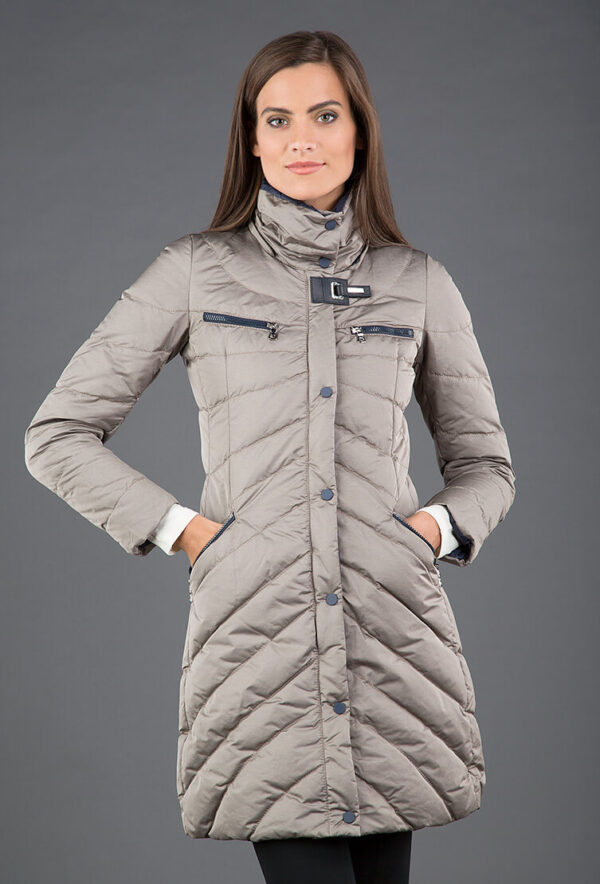
To visually elongate your figure, choose fitted models with vertical or diagonal stitching in midi or mini lengths and a voluminous collar. Better if the material of the product is matte.
